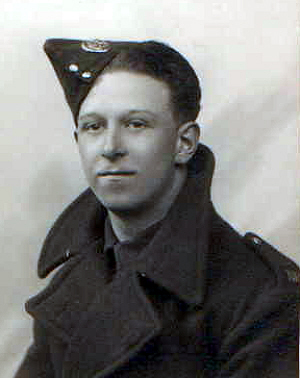
2014285, Driver, 279 Field Company, Royal Engineers.
Arthur Dixon was born in Ossett on the 9th February 1920, the second child and first son of four children born to Rowland Dixon and his wife Clarissa, nee Bedford, both born in Ossett, who married at the Wesleyan Chapel Ossett on the 2nd February 1914. In 1911, Rowland, aged 19 years and a dyer’s labourer was living with his grandparents at 68, Dewsbury Road, Ossett.
In 1939, Rowland and Clarissa Dixon and their son, Arthur, with two other siblings, were living at 7, Royds Avenue, Ossett. Rowland and Arthur were both working in the woollen trade with Rowland a packer and his son Arthur a warehouseman.
Arthur Dixon married Gladys Dickinson in Batley in spring 1943 and, on the 16th June 1944, their only child, a daughter, Barbara Dixon was born.
The “Ossett Observer” had this short obituary for Arthur Dixon:1
“Driver Arthur Dixon, Ossett – On Saturday last, Mrs. Gladys Dixon, Warwick Mount, Batley, received official information that her husband, Driver Arthur Dixon (24) was killed in action on November 2nd in the North West European theatre of war. Son of Mr. and Mrs. R. Dixon of Royds Avenue, Ossett, he was educated at Gawthorpe Council and Ossett Grammar Schools and was employed by Messrs. Jos Field Ltd,. Batley, until called to the colours in May 1940. He served as a sapper with the Royal Engineers in the Home Forces until D-Day, when he went to France, and subsequently through Belgium to Holland. He was closely connected with the Kingsway Methodist Church from Childhood, taking part with his family in various church activities.”
Driver Arthur Dixon died on the 2nd November 1944 aged 24 years and is buried at Mierlo War Cemetery, Noord-Brabant, Netherlands, Grave VI. G. 11.
The cemetery was started in the spring of 1945 when graves were brought in from the surrounding district, most of them being casualties of September-November 1944. At that time the main fighting was concerned with clearing the region south and west of the Maas and with opening up the Scheldt estuary further west. Helmond itself was occupied on 25 September, 1944.
Mierlo War Cemetery now contains 664 Commonwealth burials of the Second World War, seven of them unidentified, and one Dutch war grave.2
References:
1. “Ossett Observer”, Saturday, November 18th 1944.